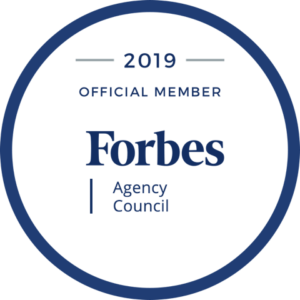by Beth Levine | Jun 5, 2010 | Just Mouthing Off
Life is busy, life is full. Who has time to think about communicating better?
Sounds reasonable enough. But wait, we send messages, make points, deliver speeches (okay, maybe not from a podium) every single day. We communicate as much as we eat or sleep, but we dedicate less time to thinking about how we do it and making it work better for us.
So what’s my point? Communicating is as central to your functioning as a human being as eating and sleeping are. Maybe more. Communicating is how we relate to others, get things done, solve problems, achieve success, and be in our lives as members of teams, organizations, and communities.
Communicating is the currency of relationships, working and personal, and so you want to think about it, work on it, and keep your currency value as high as possible!
by Beth Levine | Apr 26, 2010 | smartmouth talks!
Sometimes spin just happens. All by itself. And there’s no need for a lot of talk.
Take, for example, the case of Eliot Spitzer who, in a recent interview with The New York Times, was very critical of Andrew Cuomo, New York State’s current Attorney General and a prospective candidate for Governor of that state. Spitzer held both of those positions in the past and only relinquished the Governor’s seat under, shall we say, a bit of duress and disgrace. In the interview, Spitzer accused Cuomo of being driven by politics and said, among other things, “The real test is, do you take on the battles that have been unpopular and perhaps seem impossible to win but are important to take on?” As in, do the right thing . . . ? Is that what he meant . . . ?
The response from Cuomo’s spokesman was brief and brilliant. Spokesman Richard Bamberger said, “The attorney general’s record, credibility and honor speak for themselves, as do Mr. Spitzer’s.” End of comment.
Impressive.
by Beth Levine | Mar 10, 2010 | Just Mouthing Off
I’ve been thinking a lot lately about the lean movement that’s been afoot in industry for almost two decades now. Eliminating waste, promoting efficiency. Producing according to demand, satisfying customer needs. Creating a value stream. Hmmmmm . . .
Surely, there’s room for a lean movement in communications. Business communicators in particular have filled virtual landfills of hollow words, meaningless slides, and endless meetings. Waste is an understatement.
The value stream begins with customer — or audience — needs. Creating and delivering value, whether in manufacturing or communicating, requires some forethought and some planning on the part of the “producer.”
We could all be leaner and meaner if we first thought about our audiences and what would be of value to them, rather than figuring it out as we talk . . . and talk and talk.
More on this another time!
by Beth Levine | Jan 16, 2010 | Just Mouthing Off
When anticipating a speech or presentation, do you have any of the following symptoms:
Don’t know where to begin?
Worry about being interesting or relevant?
Have a tendency to ramble or go off on tangents?
Experience anxiety or nervousness?
Repeat after me ten times, “It’s all about them. It’s not all about me!” Okay, you should be all better now!
It can be such a relief to frame your thinking around “them” – the audience – and can take such a burden off of you!
If you don’t know where to begin, or how to be interesting and relevant, think about them or go find out about them. Go deep, and think seriously – or do research to find out – about what this audience really, really cares about. You want to ask yourself, at the end of the day, what do they really care about when it comes to my topic or expertise? Not what you care about, but what they care about . . . this might require a bit of an adjustment.
If you tend to ramble or go off on tangents, it might be that you find your information very interesting and compelling. Or it might be that you’re so knowledgeable and eager to share it, and/or that you like to be thorough. Either way, it doesn’t matter. It’s not about you. It’s about them. Every audience is listening for the what’s-in-it-for-me nugget. If there’s even a question in your mind as to whether the audience will share your enthusiasm for all your info, then you should limit your talk and be sure to give them something of value. Set firm parameters for yourself by thinking about them.
Oh, and here’s a quick tip for you . . . If you’re really not sure what they really care about, or whether they will share your enthusiasm for lots of detail on your topic, ask yourself this question: why is this audience in the room, by choice or by obligation? Aha! Naturally, if they are there by choice, you have a bit more latitude with time and detail. However, if they are there out of obligation, then you are well advised to be brief.
And, finally, if you are nervous before speaking to a group, look at them, think about them, connect with them. It is said that nervousness is just your body’s adrenaline gearing up and giving you the energy to perform well. That may be, but I say turn to them for some relief. Warm up by talking to members of the audience before you begin formally, or open your talk with a question, be sincere about receiving input, and engage in some dialogue or banter. Share the floor with them, and all of you will have a more enjoyable experience!
by Beth Levine | Jan 12, 2010 | quote
“There are two types of speakers: those who get nervous and those who are liars.”
– Mark Twain



